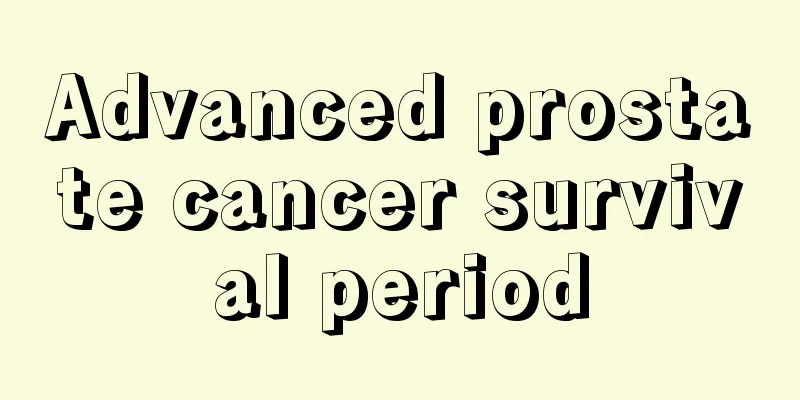Symptoms of choking the trachea due to vomiting milk

|
Many babies spit up a large amount of milk, which is suddenly inhaled into the trachea, causing coughing or even vomiting. Parents need to hold their children upright and pat them in time, and try to control their crying, because frequent and excessive crying will aggravate the spitting up and may also cause the risk of suffocation. 1 What are the symptoms of a newborn spitting up milk and choking on the trachea? If a foreign body enters the trachea of a newborn, due to the protective reflex, there will be obvious choking and coughing. If the foreign body is not expelled from the body, there will be an irritating dry cough. Some babies will also be irritable and cry, have difficulty breathing, have red faces and ears, and have symptoms such as shortness of breath and difficulty breathing. Foreign bodies may also cause local infection, inflammation, fever, etc. What are the symptoms of a baby choking on the trachea and how can parents identify them in time? 2 Reasons why newborns spit up milk and choke on their trachea 1. Newborns have a bad posture when drinking milk, which causes milk to directly enter the respiratory tract. 2. The stomach capacity of the newborn is too small, or the esophagus and pleural sphincter are immature and cannot be closed tightly, causing milk to flow back into the esophagus (vomiting). If the baby is inhaling at this time, it will cause choking. 3. The hole in the nipple is too large, the baby does not have time to swallow, and the excess milk enters the trachea. 3 How to judge whether the newborn baby’s vomiting and choking has entered the trachea 1. Parents can observe the child’s reaction. If there is no persistent choking and coughing, the baby’s symptoms will improve after a while, the face will be rosy, the breathing will be smooth, the spirit and appetite will be good, indicating that the condition has stabilized and has not entered the airway. 2. Tracheal foreign body is a life-threatening emergency and must be diagnosed promptly and removed as soon as possible. 3. Go to the hospital in time and ask the doctor to perform necessary auscultation. Abnormal respiratory sounds, such as wheezing, can be used for diagnosis. X-rays can also be taken to help with diagnosis. 4 What to do if a newborn chokes on his trachea by vomiting milk 1. Patting the back method: Let the baby lie on the parents' knees, head down, support his chest, and pat his back 4 times to make the child cough out the foreign body. You can also hold the child upside down and pat his back. 2. Induce vomiting: Put your fingers into the mouth and stimulate the root of the tongue to induce vomiting. This is suitable for tracheal foreign bodies closer to the throat. Use gauze to promptly clear the baby's oral and nasal secretions to keep the airway open. 3. Stomach squeezing method: For older babies, the abdomen can be squeezed quickly to expel foreign objects. Hold the child's waist, press the upper abdomen with the index, middle and ring fingers of both hands, squeeze hard upward and backward, relax, repeat in a rhythmic manner to form an impact airflow to flush out the foreign body. 4. Send to hospital promptly: If the above methods do not work, you should rush to the hospital's ENT department as soon as possible to remove the foreign body under laryngoscope or tracheoscope. Do not delay. If the baby stops breathing, perform mouth-to-mouth artificial respiration immediately.5. Precautions for newborns who spit up milk and choke on their trachea. Foreign objects in the newborn's trachea are very dangerous. In severe cases, it can cause the baby to suffocate and die. Therefore, prevention is the most important: 1. Educate your baby not to put things they pick up into their mouths at will to avoid accidental inhalation into the trachea. 2. Do not let your baby cry, laugh, fight or talk while eating to prevent food from choking into the trachea. 3. If you have a baby who has just learned to walk at home, adults must be careful not to place coins, melon seeds, and peanuts where the baby can reach. 4. The posture for feeding milk and water should be correct. Never lie flat on the baby. Hold the baby up and tilt him at 45 degrees. The feeding speed should be slowed down, the nipple size should not be too large, and never feed the baby when he is too hungry or crying to prevent choking. |
>>: Cleaning the nose of a newborn baby after spitting up milk
Recommend
Clinical manifestations of gastric cancer
There are no special early symptoms of gastric ca...
How to prevent the recurrence of lymphoma
There are quite a few patients with lymphoma in m...
What is the best pillow core?
In fact, pillows with more expensive pillow core ...
Interventional treatment of cerebral hemorrhage_Interventional surgery for cerebral hemorrhage
Cerebral hemorrhage is a relatively common condit...
What are the basic concepts of metabolism?
As we all know, metabolism plays a vital role in ...
Patients with advanced colorectal cancer should not over-receive chemotherapy
When colorectal cancer develops to the late stage...
Can liver abscess be easily misdiagnosed as liver cancer?
I am very happy to serve you. I saw your question...
What are the early symptoms of brain fibroma
Brain fibroma can be examined through MRI or brai...
What are the sequelae of interventional surgery for testicular cancer
After suffering from testicular cancer, patients ...
The probability of inheriting nasopharyngeal carcinoma
Is nasopharyngeal carcinoma hereditary? This is w...
Can patients with nasopharyngeal cancer live a normal lifespan?
Whether nasopharyngeal carcinoma patients can liv...
What disease is it that causes constant burping and farting
Hiccups, farts, yawns... these little embarrassme...
What are the dangers of mobile phones? If you love playing with your mobile phone, you must know this!
With the development of modern electronic technol...
Can nasopharyngeal cancer cause anemia?
Can nasopharyngeal cancer cause anemia? 1. Nasoph...
Symptoms of vesicular tinea pedis
Vesicular tinea pedis is also a type of athlete&#...









